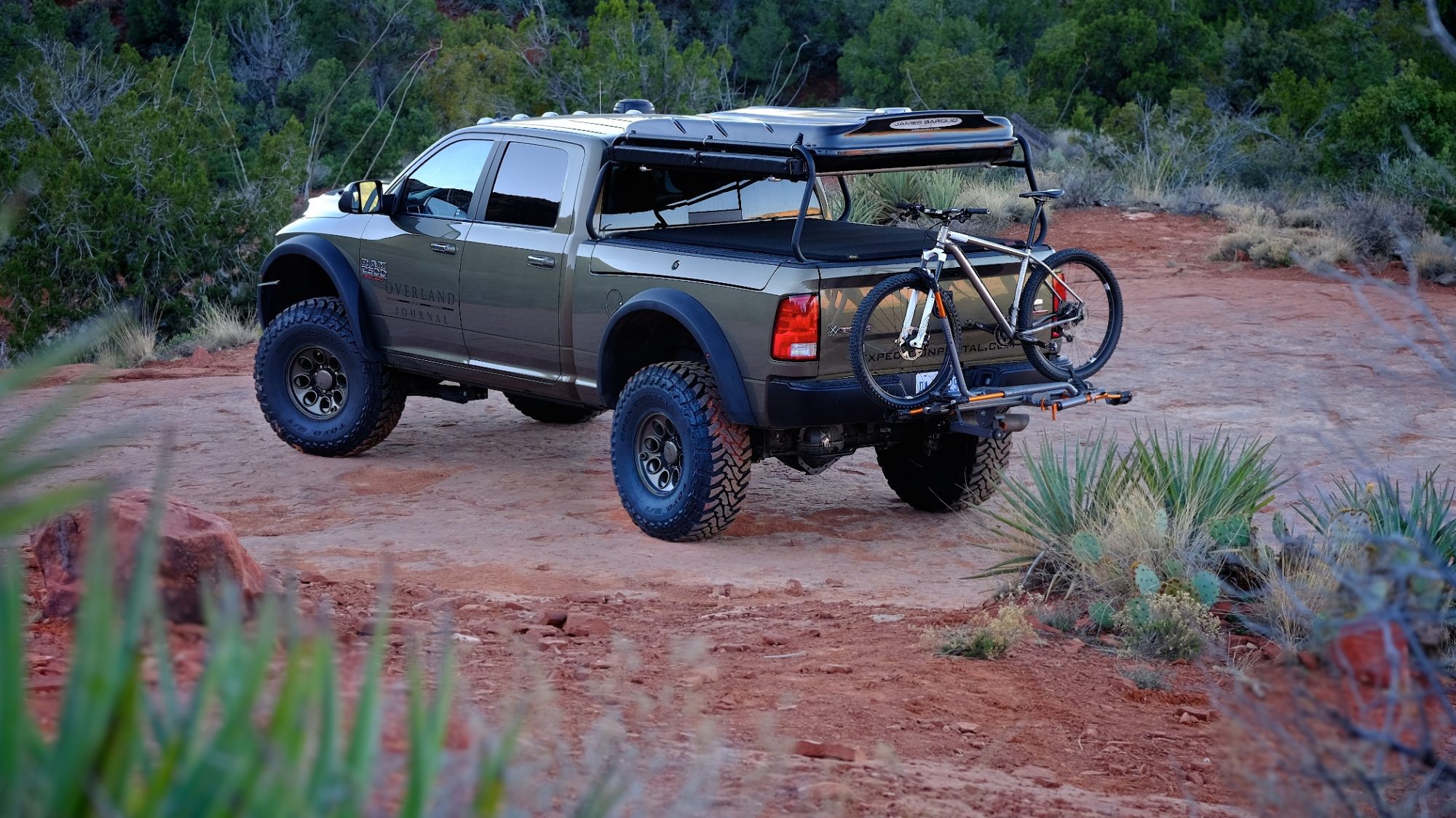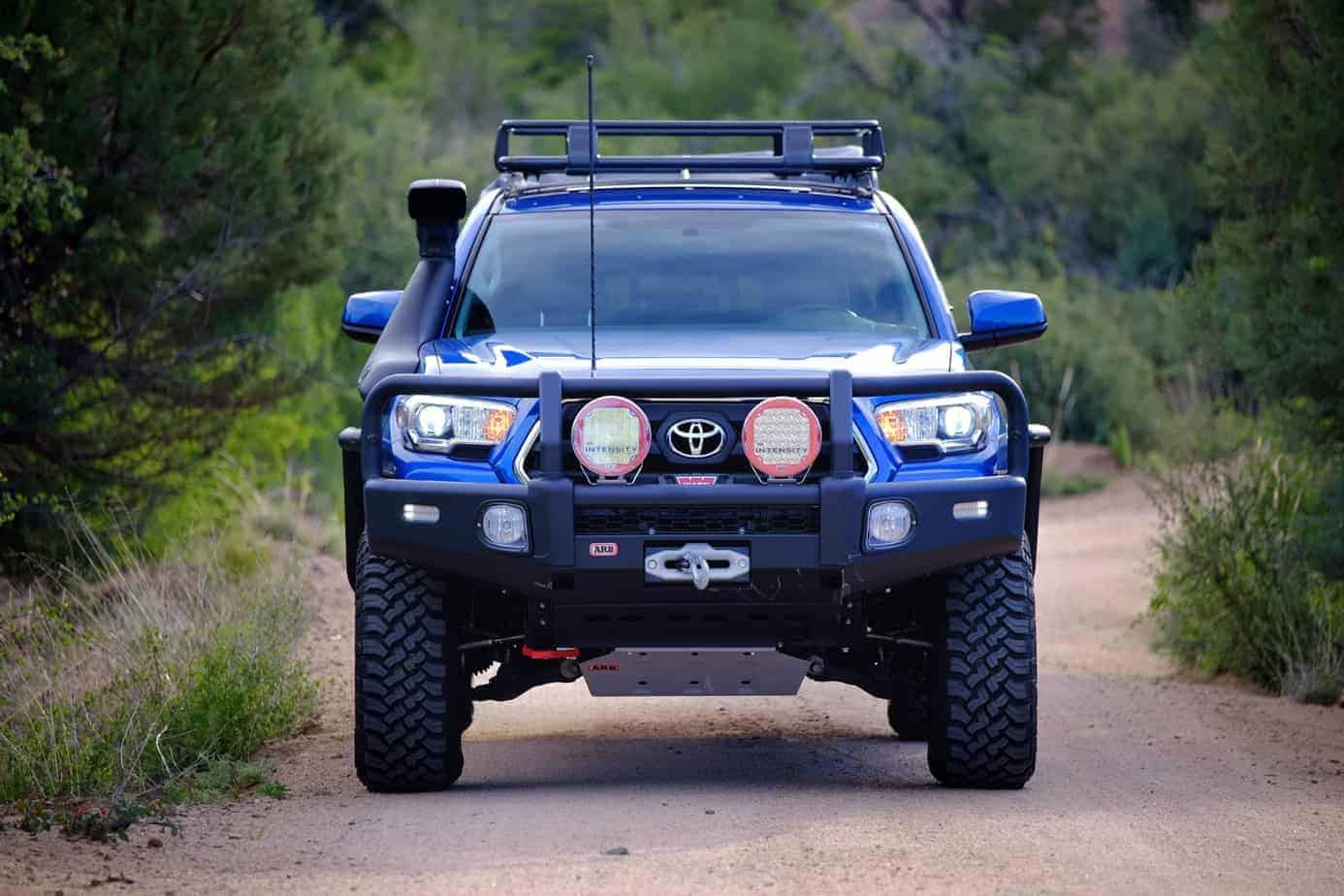Just a few years ago while poking around the Expedition Portal forums, I stumbled into a discussion about the pros and cons of the SUV versus the venerable pickup. There were some heated exchanges volleyed back and forth as each platform has ardent advocates. There was however, a noticeably disproportionate bent toward the SUV. It stands to reason as overlanding has always been an international pursuit and the pickup is about as American as apple pie.
We’re all painfully aware of the SUV’s slow death and transformation from brawny adventure mobile to urban transport. Gone is the FJ Cruiser, Xterra, and Trooper. The Pathfinder, Cherokee, and Ford Explorer are now little more than bloated station wagons. Whereas the SUV has suffered countless insults in the last decade, the pickup has evolved into a comfortable and capable option for those with ambitions to travel long and far over rough tracks.

If you were to head to your nearest dealer to buy an overland SUV, your choices are—slim. You’ll mostly likely, by the statistics, either drive home in a Jeep Wrangler or a Toyota 4Runner. I suppose you could more than double the list to include a G-Wagen and a Land Cruiser, but that’s not likely given their prices. Most G-Wagens go to plastic surgeons and their Kardashian clients. Toyota sells fewer Cruisers than Ferrari sells cars, so I doubt many of us are 200 Series buyers. I’m also jumping the gun and shamefully excluding the new Land Rover Discovery. I’m not even going to bother to mention the Range Rover. When was the last time you saw a late model Rangie fitted for overland travel?
New as it is, I think the Discovery would be my personal pick of the litter, but once again, we’re looking at big cash for that platform. If you want to keep things interesting you could lump the new Patrol-based Nissan Armada into the mix, but you can see where this is all going. The SUV has become so gentrified, they don’t really fit into the traditional overland application anymore. Good luck getting aftermarket floor mats for some of these new vehicles. Forget bumpers, sliders, and other farkles.

If we were to shop for pickups however, we’re spoiled for choice. Not only are there viable options from virtually every maker, they even offer choices. There are big trucks, smaller trucks, and a few nestled in between. You can buy diesels, gassers, and models like the Raptor already fitted with a jamming motor and underpinnings ready to tackle your local two tracks as if your last name is Gordon. An increasing number of pickups like the new Chevy ZR2 roll off the lot with factory lockers, lift kits, and upgraded suspension components. The fancy electronic driver aids originally only found on Range Rovers and Land Cruisers are now offered on mid-priced pickups.

Despite the pickup’s bias towards utility, many trucks are getting pretty posh. Today’s makers know a truck buyer is not always a plumber looking to haul tools and pipes. Some trucks are as luxurious as any sedan or upmarket SUV. The aftermarket support is also growing rapidly. American Expedition Vehicles can transform your RAM 1500 or 2500 into something superlative. Warn and ARB offer extensive catalogs of accessories for the Tacoma and a growing number of full-size domestic trucks.
The other consideration oft overlooked is payload and towing capacity. Even devout disciples of the Wrangler lament its woefully small storage volume made even more dire by low payload limits. Not many overlanders subscribe to the pack light ethos and the pickup is simply the better hauler. File that one under painfully obvious. For anyone inclined to tow a trailer, buy a slide-in camper, or maybe just have an empty bed to use on weekends for trips to the garden store, the pickup is just the better choice.

The second coming of the Golden Age of the SUV
In the last year a few people have commented on the updated SUVs headed our way and how they will represent the next epoch of the SUV in all its overlanding glory. I say—bollocks. Sure, I get it. In the next 24 months we’ll see the return of the new Land Rover Defender, Jeep Wrangler, and fun new reprisals like the Ford Bronco. But, let’s be honest. What percentage of overlanders are going to fork over $65,000+ for a Defender? The Wrangler is going to be fantastic, as it always is, but it will still have the same proficiencies and limitations. From what we know of the Bronco, and the Ranger pickup chassis on which it will mostly likely be built, just as many people with pop for the pickup variant as the wagon.

No SUV on the market is available with a diesel, lockers, and a factory-installed winch.
American overlanders have always said they’d run out the door right now if they could buy a 4×4 vehicle with a diesel engine, lockers, high payload capacity, and backed with aftermarket accessory options. Well, you can. You can buy a Chevy Colorado or RAM 1500, and if you can’t pop for the new Defender when it hits dealers, you’ll probably be able to snap up a diesel Ranger for a fraction of the fetch.
The painful reality is, for people like me who have never been pickup-inclined, if I just jot down the attributes I need and want in a new vehicle, chances are the better selection will fall within the growing segment of pickups. For those reasons, I think your next SUV should be a pickup.


